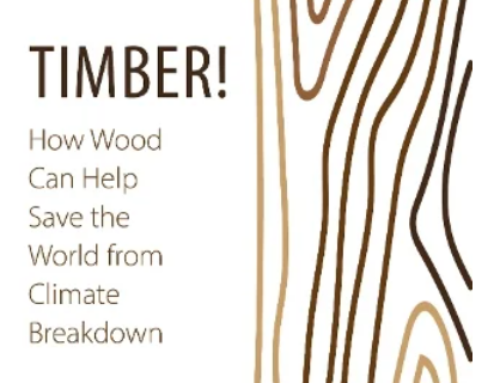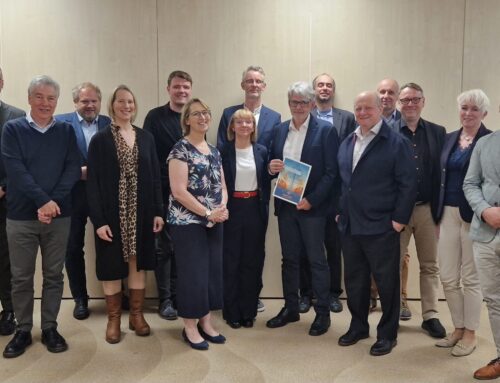
The value of Wood Forum
“My message is very simple. As simple as it can be the reduction of CO2 emissions, particularly in the construction sector. Increasing the use of wood in construction and in everyday products plays an important role in tackling climate change, developing green jobs – particularly in rural areas – and boosting the bio-economy.” With these words the EOS’s President, Mr Sampsa Auvinen, started his speech at the International Forum “The Value of Wood,” held in Brussels, in conjunction with the International Day of Forests on 21 March 2017.
This important event was hosted by the Honourable Member of the EU Parliament (MEP) Mr Paul Brannen, who also moderated the first panel, while MEP Mrs Henna Virkkunen moderated the second panel. Both Members of the European Parliament highlighted the need for an increase of wood products as building materials. “Wood is the building material of the future—versatile, beautiful, and carbon neutral”. Without any doubts, wood products play a key role in tackling climate change and developing a sustainable bio-economy.
Mr Auvinen recalled that “The European sawmill industry, as part of the Forest based industry, provides a large number of employment opportunities and career development in a wide range of disciplines. Jobs are being created across the skills spectrum and in a variety of business types and sizes – predominantly the SME sector. Without doubt, wood is one of the most environmentally and sustainable friendly material. To address global challenges such as climate change, a growing population and resource scarcity, Europe must find pathways to produce goods, food and energy by using renewable organic materials more widely. In this sense, the promotion of timber construction is anchored in the bio-economy concept. The European sawmill industry makes market products with a small carbon footprint, from raw material procured from sustainably managed forests. Companies process hardwood and softwood for a wide ranges of construction and furniture products. The sawmill industry is the backbone of the bio-economy. Residues from sawmill processes can be converted into a broad range of wood-based products including bio-composite materials, bio-plastics, textiles and carbon-neutral biofuels. Simultaneously, the production of saw-logs, and the correlated use of by products and residues, complies with the resource efficiency principle, guarantees the highest profitability for forest owners and provides the raw materials needed for developing the bio-economy.”
The Director for the environmental department of the French research centre FCBA, Mr Gerard Deroubaix offered a technical explanation of the wood products as carbon store. He recalled that the carbon footprint of construction products made of wood is, in a very large majority of cases, significantly lower than the carbon footprint of the products made of competing materials. He recalled that a recent study commissioned by the EU Commission and entitled “Climwood2030” presented calculations at European level showing that “the material use of wood products instead of functionally equivalent alternative products leads to a decrease of fossil based GHG emissions over the whole life cycle of about 1.5 à 3.5 t CO2 per ton of wood product”.
The role of timber in Architecture was presented by Mr Andrew Waugh who was invited to the “Value of Wood conference” to explain the latest achievements of building with wood. He presented the Dalston Lane Project that is the world’s largest CLT building: the ten-storey, 121-unit development is made entirely of CLT, from the external, party and core walls, through to the floors and stairs, weighing a fifth of a concrete building of this size, and reducing the number of deliveries during construction by 80 per cent. The ten-storey, 121-unit development, is made entirely of CLT, from the external, party and core walls, through to the floors and stairs, weighing a fifth of a concrete building of this size, and reducing the number of deliveries during construction by 80 per cent. Another example of the wood application is the Murray Grove. As explained by Mr Waugh, the Murray Grove is the first urban housing project to be constructed entirely from pre-fabricated solid timber, from the load bearing walls and floor slabs to the stair and lift cores.
Mr Per-Olof Weding, President of European State Forest Association (EUSTAFOR) emphasised that European Forests are constantly growing both in size and in volume of wood. This extremely positive fact is due to an active and sustainable forest management system that ensures the production capacity and resilience of forest ecosystems as a whole. He stressed that a vibrant European forestry sector can make the bio-economy the next major economic development and can bring real benefits to mitigate climate change.
The Conference attracted roughly 100 participants and it was concluded with a cocktail reception.
You can find online the presentations of the Value of Wood Forum, as well as more blogs, interviews, photos and the spring issue of Revolve Magazine at the following LINK.
In the picture from left to right: Mr Auvinen, President of EOS and CEO of Norvik Timber Industries, Mr Doehring, EOS Board Member and CEO of ILIM Timber, Mr Joebstl, CEO od Stara Enso Austria, Mr Merivuori, EOS Board Member and Director of Sahateollisuus, and Mr Stuart Goodall, Director of Confor. The EOS Members are standing in front of the "CUBE" displaying key messages on the use of wood in tackling climate change and the role of the sawmill industries in the bio-economy.
The EOS French Board Members, Mr Sève from the Company Monnet-Sève and and Mr Lefebvre from Groupe Lefebvre were both present at the "The Value of Wood" Forum.
Related Posts
Contact
EUROPEAN ORGANISATION
OF THE SAWMILL INDUSTRY AISBL
Rue Montoyer 24/box 20
BE-1000 Brussels
Tel.: +32 2 287 08 68
Email: info@eos-oes.eu




